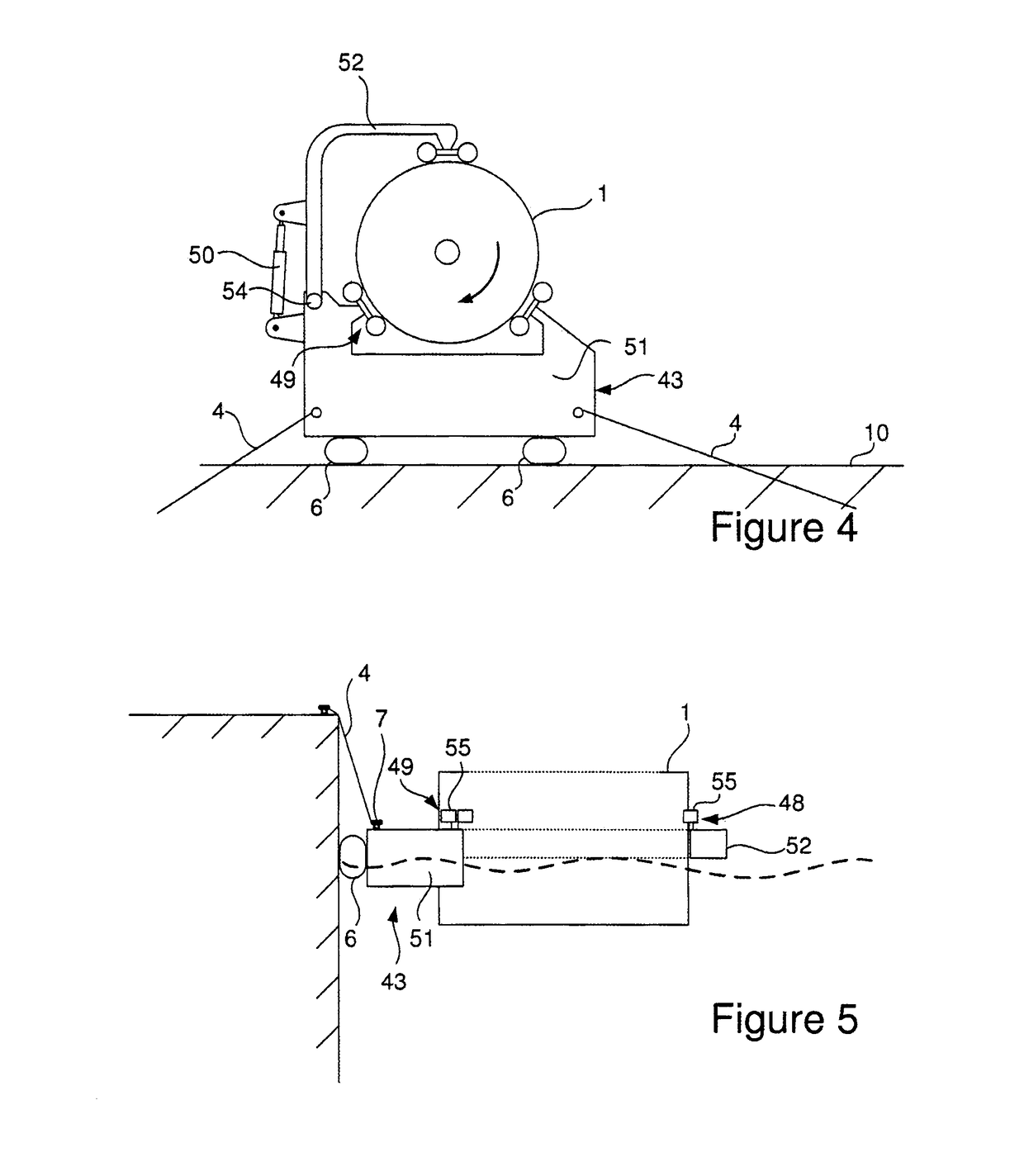Cable loading structure
a loading structure and cable technology, applied in the direction of mechanical equipment, transportation and packaging, passenger handling equipment, etc., can solve the problems of increasing transportation costs, complex arrangement, and high production and maintenance costs, and achieve the effect of enhancing the self-sufficiency of the cable loading structure and accurate keying of the drive mechanism
- Summary
- Abstract
- Description
- Claims
- Application Information
AI Technical Summary
Benefits of technology
Problems solved by technology
Method used
Image
Examples
Embodiment Construction
[0043]Prior to loading or unloading a cable from a cable storage tank 1, the tank needs to be positioned in the loading bay area 2 of the cable loading structure 3 (see FIG. 1). This may be achieved by maneuvering the tank whilst the cable loading structure 3 is moored for example against a harbour wall, a quay, another vessel or at an anchorage. Equally, the cable loading structure 3 may be maneuvered into position whilst the tank is substantially stationary.
[0044]FIG. 1 shows a plan view of a tank 1 and a cable loading structure 3. In this example, the cable loading structure 3 is tied up alongside a quay 10. Initially, the tank is not engaged with the structure 3 but is being brought towards it to be received in the loading bay area 2.
[0045]The floating cable tank 1 may be pushed by tug (not shown) and / or pulled by lines (not shown) into the loading bay area 2 of the cable loading structure 3. The cable loading structure 3 is moored, via lines 4 from bollards 7, against the quays...
PUM
 Login to View More
Login to View More Abstract
Description
Claims
Application Information
 Login to View More
Login to View More - R&D
- Intellectual Property
- Life Sciences
- Materials
- Tech Scout
- Unparalleled Data Quality
- Higher Quality Content
- 60% Fewer Hallucinations
Browse by: Latest US Patents, China's latest patents, Technical Efficacy Thesaurus, Application Domain, Technology Topic, Popular Technical Reports.
© 2025 PatSnap. All rights reserved.Legal|Privacy policy|Modern Slavery Act Transparency Statement|Sitemap|About US| Contact US: help@patsnap.com



